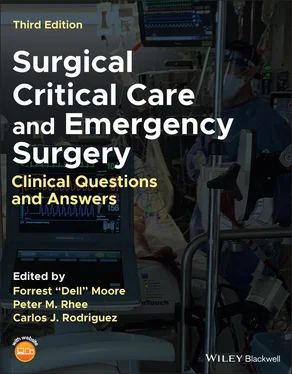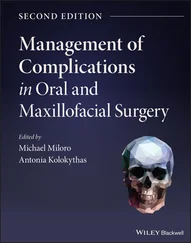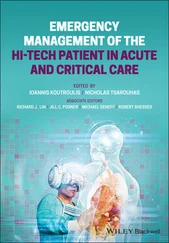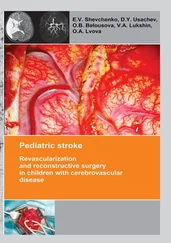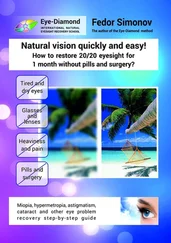Surgical Critical Care and Emergency Surgery
Здесь есть возможность читать онлайн «Surgical Critical Care and Emergency Surgery» — ознакомительный отрывок электронной книги совершенно бесплатно, а после прочтения отрывка купить полную версию. В некоторых случаях можно слушать аудио, скачать через торрент в формате fb2 и присутствует краткое содержание. Жанр: unrecognised, на английском языке. Описание произведения, (предисловие) а так же отзывы посетителей доступны на портале библиотеки ЛибКат.
- Название:Surgical Critical Care and Emergency Surgery
- Автор:
- Жанр:
- Год:неизвестен
- ISBN:нет данных
- Рейтинг книги:3 / 5. Голосов: 1
-
Избранное:Добавить в избранное
- Отзывы:
-
Ваша оценка:
- 60
- 1
- 2
- 3
- 4
- 5
Surgical Critical Care and Emergency Surgery: краткое содержание, описание и аннотация
Предлагаем к чтению аннотацию, описание, краткое содержание или предисловие (зависит от того, что написал сам автор книги «Surgical Critical Care and Emergency Surgery»). Если вы не нашли необходимую информацию о книге — напишите в комментариях, мы постараемся отыскать её.
Surgical Critical Care and Emergency Surgery Surgical Critical Care and Emergency Surgery,
Surgical Critical Care and Emergency Surgery
Surgical Critical Care and Emergency Surgery — читать онлайн ознакомительный отрывок
Ниже представлен текст книги, разбитый по страницам. Система сохранения места последней прочитанной страницы, позволяет с удобством читать онлайн бесплатно книгу «Surgical Critical Care and Emergency Surgery», без необходимости каждый раз заново искать на чём Вы остановились. Поставьте закладку, и сможете в любой момент перейти на страницу, на которой закончили чтение.
Интервал:
Закладка:
17 Which of the following is an expected cardiovascular change during pregnancy?Decreased heart rate.Decreased cardiac output.Increased peripheral vascular resistance.Decreased ventricular distension.Decreased systemic vascular resistance.Pregnancy results in increased heart rate, increased cardiac output, decreased peripheral vascular resistance, increased ventricular distension, and decreased systemic vascular resistance.Answer: EHill CC and Pickinpaugh J . Physiologic changes in pregnancy. Surg Clin N Am. 2008; 88: 391–401.
18 Which of the following is a mechanism by which vasodilators improve cardiac function in acute decompensated heart failure?Increased ventricular preload.Decreased stroke volume.Increased ventricular afterload.Increased cardiac output.Increased ventricular filling pressure.The pathophysiology of acute heart failure involves increased myocardial oxygen demand with increased ventricular filling pressures, low cardiac output, and increased systemic vascular resistance. Nitroprusside and nitroglycerin remain two of the most potent vasodilators used in therapy. Nitrogylcerin is a venodilator working to decrease preload, decrease afterload, and myocardial oxygen demand. Nitroprusside is an arterial and venous dilator decreasing preload, afterload, myocardial oxygen demand as well as increasing stroke volume and cardiac output.Answer: DCarlson MD and Eckman PM . Review of vasodilators in acute decompensated heart failure: the old and new. J Card Fail 2013; 19(7): 478–493.
19 Which of the following is an expected effect of increased intrapleural pressure from positive pressure ventilation?Increased venous return.Increased aortic pressure.Baroreceptor dampening.Increased systemic vascular resistance.Increased preload.With positive pressure ventilation, increased intrapleural pressure results in initially increased aortic pressure causing compensatory reduction in systemic vascular resistance and left ventricular afterload by activated baroreceptors, thereby increasing cardiac output. Positive pressure additionally decreases venous return and, therefore, preload.Answer: BAlviar CL, Miller PE, McAreavey D, et al. Positive pressure ventilation in the cardiac intensive care unit. J Am Coll Cardiol. 2018; 72: 1532–1553.
20 A 70‐year‐old woman in a motor vehicle collision undergoes a splenectomy for Grade IV laceration and receives four units of whole blood in the OR but arrives in the ICU tachycardiac and hypotensive. Point of care hemoglobin is 14.3 mg/dL 2 hours post‐transfusion. Her abdomen was left open and minimal output is coming from her negative pressure abdominal dressing. She has multiple rib fractures and a radius fracture. Which of the following therapies would promote end‐organ perfusion?Decrease vasoactive drug doses (decrease peripheral vascular resistance).Increase sedation and pain medications to decrease her heart rate.Increase end‐diastolic volume with volume resuscitation.Increase contractility with positive inotrope.Increase end‐systolic volume.This patient has evidence of blunt chest trauma with multiple rib fractures and tachycardia. While she could have hypovolemic shock from her splenic injury and intraoperative blood loss, she remains hypotensive despite transfusions with a hemoglobin of 14.3 mg/dL making this less likely and no evidence of ongoing bleeding from her abdomen. This makes it less likely that further volume resuscitation with blood or crystalloid would be helpful. Blunt cardiac injury can occur with blunt chest trauma and is initially screened for with EKG and troponin assessment, followed by an echocardiogram. Blunt cardiac injury may be improved with positive inotropic medications.Decreasing vasoactive drug doses would worsen hypotension and worsen end‐organ perfusion. Vasopressors are often used in supportive treatment for blunt cardiac injury and may need to be increased to promote end‐organ perfusion. Increasing sedation and pain medications may improve her tachycardia but would worsen her hypotension and end‐organ perfusion. Increasing end‐systolic volume would decrease her stroke volume and cardiac output further, worsening her end‐organ perfusion.Remember: Answer: DLevick JR. An Introduction to Cardiovascular Physiology. Butterworth and Co., London, 2013.Clancy K, Velopulos C, Bilaniuk JW, et al. Screening for blunt cardiac injury: An Eastern Association for the Surgery of Trauma practice management guideline. J Trauma Acute Care Surg. 2012; 73 5: S301–S306.
21 A 39‐year‐old man presents with a cold right leg and complains of nine days of symptoms. Following a thromboembolectomy and fasciotomy, he develops hypoxia with saturation of 87% and respiratory distress. An arterial blood gas shows: pH 7.47, paO2 = 50 mm Hg, HCO3 = 22 mmol/L, pCO2 = 30 mm Hg. Chest x‐ray shows patchy consolidations bilaterally and he reports fever prior to admission and that he works in a skilled nursing facility during the pandemic.Based on the above results, his A‐a gradient is (at sea level, water vapor pressure = 47 mm Hg):150 mm Hg10 mm Hg38 mm Hg50 mm Hg62 mm HgA‐a gradient equals PAO2−PaO2. His PaO2 from the ABG is 50. The PAO2 can be calculated from this equation: Therefore, A‐a gradient (PaO2−PAO2) = 62.5 mm Hg.Answer: EMarino P. The ICU Book , 3rd ed., Lippincott Williams & Wilkins, Philadelphia, PA, chapter 19 2007.
22 The patient above is placed on a nonrebreather mask with minimal improvement. What is the most likely etiology of the above patient’s respiratory failure and appropriate intervention?Pulmonary embolism, anticoagulation.Hyperventilation from anxiety, benzothiazines.COVID‐19 pneumonia, dexamethasone, and high‐flow nasal canula.Neuromuscular weakness, reversal of paralytic.Pulmonary edema, acute kidney injury from rhabdomyolysis.Hypoxemia occurs in four conditions: low inspired oxygen, shunt, V/Q mismatch, and hypoventilation.Hypoventilation would present with high CO2 and normal A‐a gradient. This could occur with oversedation, neuromuscular weakness, and residual anesthesia. Hyperventilation would cause tachypnea, low CO2, but not hypoxia, so A‐a gradient should be normal. Low inspired oxygen should have a low PO2 and normal gradient. An acute PE or asthma exacerbation presents with V/Q mismatch with elevated A‐a gradient and normal PCO2. It should correct with administration of oxygen. Shunting (pulmonary edema or pneumonia) has an elevated A‐a gradient that does not improve with oxygen administration. The patient is young for postoperative MI and has risk factors and a chest x‐ray consistent with COVID‐19 pneumonia, which could also increase his risk of thrombotic events since as an arterial thrombus.Answer: CWeinberger SE, Cockrill BA and Mande J. Principles of Pulmonary Medicine , 5th ed., W.B. Saunders, Philadelphia, PA, (2008).NIH COVID‐19 Treatment Guidelines. Therapeutic management of patients with COVID‐19. www.covid19treatmentguidelines.nih.gov/therapeutic‐management/(accessed 15 December 20).
23 A 63‐year‐old patient with history of hypertension and type 2 diabetes presents with acute respiratory distress syndrome from pneumococcal pneumonia and is being managed by the ICU team for severe ARDS. After appropriate sedation and analgesia, which of the following is NOT an appropriate strategy for management?Low tidal volume ventilation (4–8ml/kg IBW).Prone positioning <6 hours/day.Use of recruitment maneuvers.Higher PEEP levels with plateau pressures <30 cm H2O.Very select use of high‐frequency oscillatory ventilation.Acute respiratory distress syndrome management guidelines target management with low tidal volume ventilation, low inspiratory pressures with plateau pressures <30 cm H20, high PEEP levels are better than low PEEP levels, and prone positioning for at least 12‐hour periods per day with improved mortality. Less than 6 hours of prone position per day would not be recommended as it is too short a time period.Answer: BFan E., Del Sorbo L, Goligher EC, et al. An Official American Thoracic Society/European Society of Intensive Care Medicine/Society of critical care medicine clinical practice guideline: mechanical ventilation in adult patients with acute respiratory distress syndrome. Am J Respir Crit Care Med. 2017; 195 9: 1253–1263. https://www.thoracic.org/statements/resources/cc/ards‐guidelines.pdf.
Читать дальшеИнтервал:
Закладка:
Похожие книги на «Surgical Critical Care and Emergency Surgery»
Представляем Вашему вниманию похожие книги на «Surgical Critical Care and Emergency Surgery» списком для выбора. Мы отобрали схожую по названию и смыслу литературу в надежде предоставить читателям больше вариантов отыскать новые, интересные, ещё непрочитанные произведения.
Обсуждение, отзывы о книге «Surgical Critical Care and Emergency Surgery» и просто собственные мнения читателей. Оставьте ваши комментарии, напишите, что Вы думаете о произведении, его смысле или главных героях. Укажите что конкретно понравилось, а что нет, и почему Вы так считаете.
